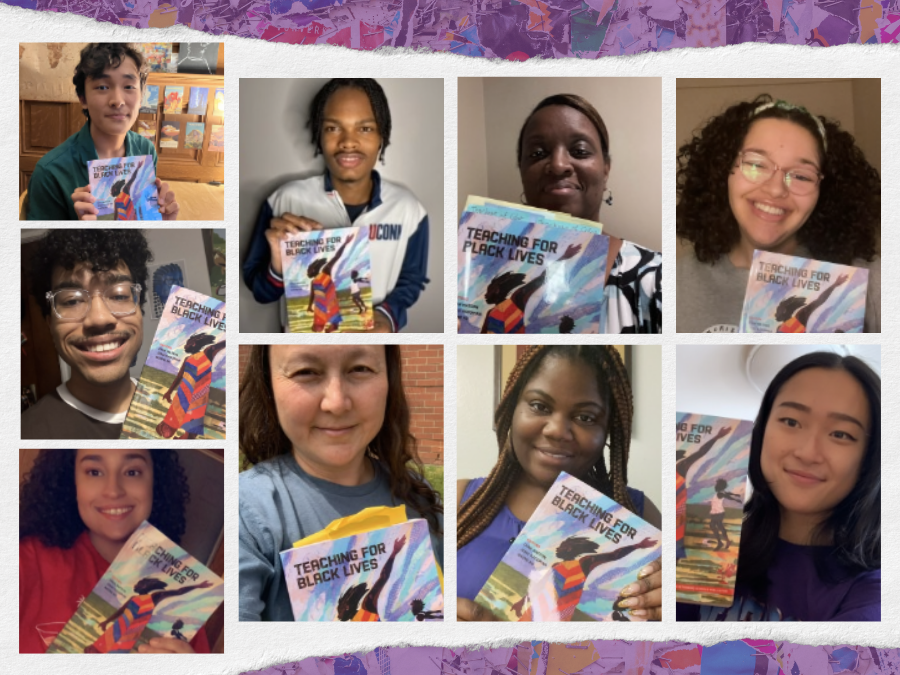
Connecticut T4BL Study Group
The Connecticut Teaching for Black Lives study group is made up of 15 teachers of color from across the state. They meet monthly online to “learn from each other and find creative new ways to build co-conspiratorship with other staff members in school to get at the most fundamental work — that Black students matter in school and in our society.” When Jennifer Heikkila Diaz (JHD), an educator coach and study group coordinator, applied to lead a group for the second year, she said:
Last school year, it was a lifeline and learning space for about two dozen teachers of color in Connecticut, not just to share challenges but to reflect and act more intentionally as educators of color. This is a much-needed space in our state, where many teachers of color — fewer than 10% of the K–12 teaching population — teach in racial isolation. We want to build on our work from last year and expand the space to more teachers of color, especially in light of various ethnic studies initiatives rolling out in our state.
At the start of every meeting, JHD reviews their community agreements, which include Luis Valdez’s Mayan-inspired poem in Pensamiento Serpentino entitled “In Lak’ech.”
In Lak’ech
Tú eres mi otro yo.
You are my other me.
Si te hago daño a ti,
If I do harm to you,
Me hago daño a mi mismo.
I do harm to myself.
Si te amo y respeto,
If I love and respect you,
Me amo y respeto yo.
I love and respect myself.
In consideration of teachers’ busy schedules, 15-20 minutes of each meeting are alloted to read an article together. During their March meeting, the group read and discussed “Space for Young Black Women: An interview with Candice Valenzuela” in Section 1 (“Making Black Lives Matter in Our Schools”) of Teaching for Black Lives.
Study group members were asked to consider:
- Does your school currently have any classes or student spaces like this?
- How could a class/space like this work in your current setting?
- Which other student groups in your school could use a community like this?
- How do you currently contribute to or how could you contribute to building spaces like this in your school?
- What is something you take from this interview? Can you commit to cultivating and co-creating these sorts of spaces in your school?
Christina Nelson, a high school special education teacher, is considering restarting a space for girls. She said:
It started out very well, but the person leading the group retired last year and then nobody took over. Reading this made me think about how necessary it is in our high school and how it would be a very good thing for us to do on our enrichment Wednesdays.
Francoise Deristel-Leger, a teacher at Brookside Elementary School, recalled her time leading yoga in an after-school program:
There was a point where I would teach every Thursday and I would get a group of girls — young African American girls, Latinx girls — and it would turn into a session of holding space. They talked about how they looked, how they felt, and what issues they were having. Anytime there is a strong presence where you’re ready to hold space, the young people will come.
Dora Guo, a pre-service teacher and restorative justice practices mentor in New Haven Public Schools, said,
The reading made me think about how we label young people and often, it’s the ones who are most outright and in your face — overtly being “disruptive.” We all know that there are plenty of students who also need those kinds of spaces even though they aren’t regularly being kicked out of class.
It hurts when the issues are deemed “resolved” and, therefore, we are supposed to end our relationship with students because there’s not an alternative space for them to have this type of meaningful set-aside time for community.
The group concluded on the agreement that building community is a critical aspect of a student’s schooling experience.
As one study group member noted, “It changes what you can do in a space when students really feel like they’re part of a community.”

